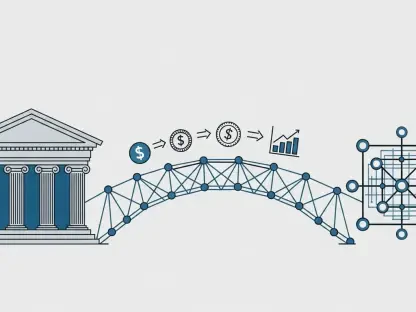The escalating national debt of the United States has become a pivotal issue, sparking intense debate among economists, politicians, and the public. While budget deficits continuously add to the national debt, recent events, such as the downgrade by Moody’s Investors Service of the US credit rating from Aaa to Aa1, have intensified concerns about fiscal sustainability. This credit demotion, attributed to the significant increase in national debt, highlights growing fears surrounding the ability of the United States to manage its financial obligations while maintaining high interest rates. As policy discussions evolve, influential figures are vocalizing their skepticism regarding the country’s fiscal health. They predict potential economic crises stemming from fiscal mismanagement, igniting further discourse within political circles and the broader community.
Warning Signs of Financial Instability
Ray Dalio, founder of Bridgewater Associates, is a prominent voice in the discussion around national debt risks, as he emphasizes the inadequacy of conventional credit ratings in assessing real threats posed by government borrowing. Dalio’s insights center not only on the possibility of default but also on the dangers of currency devaluation should the government opt to print money as a debt resolution strategy. To illustrate the severity, Dalio warns of an impending “economic heart attack,” potentially manifesting within a few years, if decisive measures are not taken. Similarly, Tesla CEO Elon Musk has openly criticized legislative initiatives under President Donald Trump that include substantial tax cuts and increased spending, thereby inflating the national deficit. Musk asserts such policies hasten the likelihood of financial turbulence, portraying a dire scenario where fiscal challenges could undermine economic stability.
Despite the conviction expressed by Dalio and Musk, skepticism persists regarding forecasts of imminent financial collapse. Examining Dalio’s historical track record reveals a pattern of predictions about looming debt crises that have not materialized. Past assertions of impending recessions often met with continued economic growth and stock market resilience challenge the perceived inevitability of his forecasts. This background prompts reconsideration of the validity of his current projections, suggesting they may not fully encapsulate the multifaceted nature of economic dynamics. Organizations like the Congressional Budget Office (CBO), tasked with federal policy oversight, face similar criticisms. Their routine projections of the federal deficit often project dramatic debt increases linked to legislative changes, yet their models sometimes fail to reflect the myriad variables influencing economic outcomes.
Structural and Predictive Flaws
The discourse around national debt inevitably involves scrutiny of the models used for economic forecasting. Critics argue that assumptions embedded within frameworks like those utilized by the CBO may not fully account for real-world complexities. A notable example includes the perceived correlation between rising debt levels and escalating interest rates—a notion sometimes contradicted by historical instances of sustained low interest rates amidst increased debt, as seen in global counterparts such as Japan and South Korea. Japan exemplifies strategic economic intervention that maintained stability despite a high debt-GDP ratio, suggesting that thoughtful policy design and execution can mitigate fiscal crises.
This scrutiny of predictive inaccuracies extends to structural weaknesses within forecasting models. These models, often static and rigid, overlook fluctuations in key economic indicators, prompting calls for innovative approaches to economic projections. The suggestion to adopt range-based forecasts represents an effort to reconcile static projections with actual economic scenarios, allowing for dynamic adjustments aligned with varying factors like growth, interest rates, and fiscal policies. This reimagined approach promises to bridge the disconnect between pre-established forecasts and evolving market realities, providing more accurate and adaptable economic assessments capable of informing effective policymaking.
Navigating Economic Challenges
Despite the attention given to potential crises, the United States possesses notable strengths that provide a counterbalance to pessimistic projections. Demographic indicators, such as population growth and labor force vitality, contribute to sustained economic potential. The status of the US dollar as the world’s primary reserve currency affords significant advantages, offering resilience against economic disruptions. Additionally, the vigorous growth within the high-tech sector signals innovation-driven expansion, positioning the nation to navigate fiscal challenges effectively. Historical evidence supports a trajectory of economic progress and adaptability, emphasizing resilience despite occasional setbacks.
The article advocates skepticism toward assumptions of inevitable debt-driven collapse, citing examples where countries with fewer resources managed similar fiscal challenges successfully. While uncertainties surrounding hegemonic shifts remain plausible, it asserts that the United States is unlikely to falter owing only to its national debt. Nonetheless, this does not preclude the necessity of remaining vigilant against potential risks, urging policymakers to prioritize strategic planning that harnesses historical insights into adaptive capacities.
Balancing Concerns and Opportunities
Ray Dalio, founder of Bridgewater Associates, is a key figure discussing the risks associated with national debt. He criticizes standard credit ratings for failing to accurately assess the true dangers posed by government borrowing. Dalio highlights not just the potential for default, but also the risk of currency devaluation if the government resorts to money printing as a way to manage debt. He warns that without decisive action, an “economic heart attack” could occur within a few years. Similarly, Tesla CEO Elon Musk has criticized policies under President Donald Trump, such as large tax cuts and increased spending, which he believes inflate the national deficit and push the economy toward instability. Musk sees such moves as hastening financial turmoil.
Despite the strong opinions from Dalio and Musk, there’s skepticism about forecasts of a near financial collapse. Dalio’s historical trend of predicting debt crises has often been met with continued economic growth and strong stock markets, which questions the certainty of his predictions. This history suggests a need to reconsider the validity of his claims, highlighting the complexity of economic processes. Similarly, the Congressional Budget Office (CBO), responsible for overseeing federal policy, faces criticism for its deficit projections. Their forecasts often predict significant debt increases due to policy changes but sometimes fall short in accounting for the multitude of factors affecting the economy.









